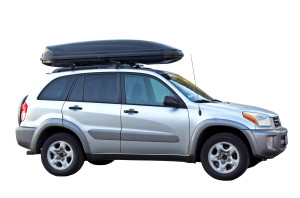What is GAP insurance and where is the best place to get it?

If you drive a car you bought on finance, but you’ve never heard of GAP insurance (sometimes called ‘shortfall cover’), then you could be at risk of losing out financially in the event of an accident.
We all know car insurance is mandatory for all road users in the UK, and this protects against the cost of an accident, including the repair bill or the price of a replacement car – or does it?
As many as three out of four new cars on UK roads are bought on finance, with the cost of the vehicle repayable over a set period of monthly instalments.
But when a vehicle that is subject to a finance deal is involved in a collision or other accident, the insurance company might disagree about its true market value.
In essence, you may still be paying off a finance deal on a brand new car, but the insurer might argue that it is only really worth as much as it would cost to buy it second-hand.
However much the insurer agrees to pay out, you still have to clear what’s left of the finance deal – and this is the ‘shortfall’ or ‘gap’ that features in the name of this type of policy.
In fact, ‘GAP’ technically stands for Guaranteed Asset Protection, but it’s a useful reminder of exactly what the policy is protecting you against.
Remember, you will still owe the finance company the outstanding balance on your car, even if it is destroyed in an incident where a third-party is at fault, and this could lead to a substantial shortfall and months of paying for a car you can’t even drive anymore.
When can I buy GAP insurance?
The car dealer or finance company that provides you with the money to buy your vehicle in the first place may offer you GAP insurance, but you can often get a better deal elsewhere.
You usually have up to about three months to take out a policy, but remember too that the sooner you do so, the sooner you are protected against any unforeseen incidents.
In the worst-case scenarios, some drivers have an accident within days or even hours of collecting their car from the dealer, and are left facing months of repayments on a vehicle that has been written off.
There are certain other limits that apply, for example many insurers ask that the vehicle has less than 80,000 miles on the clock, and is under seven years old.
It’s worth taking note of these figures; not all cars bought on finance are fresh from the production line, and shortfall cover can be obtained even on those that have been driven for several years.
Just make sure no changes have been made to the vehicle in those years, or that your insurer is well aware of these upfront, as your policy may be void if the car has been altered from the manufacturer’s specification.
How much does it cost?
If you take the policy offered to you by your car dealership or finance company, the total cost is likely to be much higher.
Dealers must allow a cooling-off period during which you can cancel the policy, and this is typically 48 hours, giving you a window of opportunity to find cover elsewhere.
Third-party shortfall protection may be much cheaper, but remember to check exactly what you are covered against, as it could prove to be a false economy if it does not pay out as much as other policies would.
Other factors you might want to compare include the duration of the policy – does it apply only for one year, or for the full length of your finance agreement?
Try to be clear about the insurer’s valuation of your vehicle, as this will obviously affect any payout you receive, and check if there is an excess to pay before you receive the remainder of the value.
Types of policy
Just like car insurance, there are different types and levels of GAP insurance policy too, although they all in principle protect you against the same thing.
Return to Value
This is a simple shortfall protection in the event that the insurer’s valuation does not cover the amount you owe to the finance company.
It will pay out the shortfall between the two figures – but importantly, ‘return to value’ is based on the valuation of your vehicle at the time you take out the GAP policy, so it’s often best to arrange this type of cover as soon as possible after receiving your new vehicle.
Return to Invoice
This is similar to a ‘return to value’ policy, but instead of being based on a valuation at the time you take out the cover, it simply promises to repay any shortfall between the insurer’s valuation, and the original amount invoiced by your dealer.
Vehicle Replacement
Finally, a policy that promises to cover the cost of a like-for-like replacement to the same specification as your original vehicle.
This type of cover is typically only available on very new vehicles, for example less than three months old, and with less than 500 miles on the clock.
Is it worth it?
Think about the numbers involved – a GAP insurance policy can cost a few hundred pounds for the duration of your finance agreement.
It’s similar in cost to a mobile phone insurance policy, but the protection you receive is worth potentially many thousands of pounds, not just a few hundred.
As an example, imagine you bought a £10,000 car on finance, and have paid off £5,000 of what you owe, before the vehicle is destroyed in an accident.
Your insurer prices the car at £7,000 at current market values, and pays you that amount, allowing you to clear the remaining £5,000 of finance.
But that leaves you having paid out £5,000 of your own money, and with only a net balance of £2,000 to buy a new car – effectively, you have lost £3,000 along the way.
Compare this theoretical £3,000 loss with a policy cost of around £300, and it’s easy to see why GAP insurance is so important to drivers who buy their vehicle on finance.
